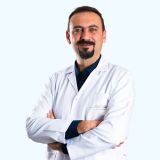
What is it?
Pilonidal sinus is a rectal disease in which the discharge seen in men is at the forefront and treated surgically. The main reason is that the hair shed from the body enters the pores in the coccyx and causes abscesses in the process of infection.
In whom is it common?
It is more common in individuals who are male, have dark skin, excess body hair and obese, that is, those with excess adipose tissue.
What are the Symptoms?
It is a process that starts similar to acne-like skin wounds and continues with discharge, itching and swelling. Especially after the discharge, the hairs shed from the surrounding area break into the wound and cause recurrent inflammation and progressive pilonidal sinus. The later the treatment, the greater the damage inside. Recovery and surgery become troublesome in the same extent.
How is the diagnosis made?
During the surgical examination, the mouth of the perianal fistula is observed in the coccyx. If there is inflammation, discharge and even hair can be seen from this opening. Whether the disease is advanced or not can be determined via USG or MRI imaging, but the surgeon usually decides which surgical technique to use according to the controls performed during the operation.
How is the treatment carried out?
In classical treatment, there is a wide range of surgical treatment ranging from deep removal of the abscess with surgery to tissue shifting. Depending on the surgery performed, the patient should comply with the restriction of movement for 5-10 days after surgery. Daily movements of the patient after classical surgery cause the sutures in the operation area to stretch and open. Again, the fact that this area is moist and closed causes an increased risk of postoperative infection.
What is Treatment with Laser?
Pilonidal sinus surgery with laser is a state-of-the-art surgical method and allows patients to be discharged from the hospital on the same day and return to their daily lives. Less pain and anaesthesia compared to classical surgery is also an important factor in the preference of patients.
Pilonidal sinus treatment with laser provides advantages due to low infection risk, no wound opening due to the absence of stitches, early return to daily life and a painless treatment process. It reduces the total cost with short hospitalisation period and early return to work.
Post-Treatment Follow-up and Diet
In classical surgery, patients are called for control ~3-5 days after discharge. In 30% of patients, opening of the sutures is observed. Especially in patients with tissue shifting, reoperation may be considered at a rate of up to 10% due to the opening of the sutures. In order to prevent these complications, it is important for the patient to comply with the movement restriction, to consume water and liquid food, and to keep the operation area clean and to make effective dressing.
Patients are called for control 5 days after discharge in surgeries performed with laser. Daily wound care is sufficient and conditions such as infection are very rare.
What is the Chance of Recurrence?
The risk of recurrence can reach 30-45% if there is a condition such as infection or suture dehiscence that impairs wound healing after flap, which is the most effective method. In classical surgical methods, the risk rate varies between 5-45% due to these factors. Phenol application and laser surgical treatments have fewer complications compared to surgical treatments and have a recurrence rate of 20%.
How long does the treatment take?
Although the healing process varies between 3-8 weeks, the period is prolonged in cases such as wound opening and infection development. With laser, these periods are shortened and the complete closure of the wound is reduced to 2-3 weeks.


